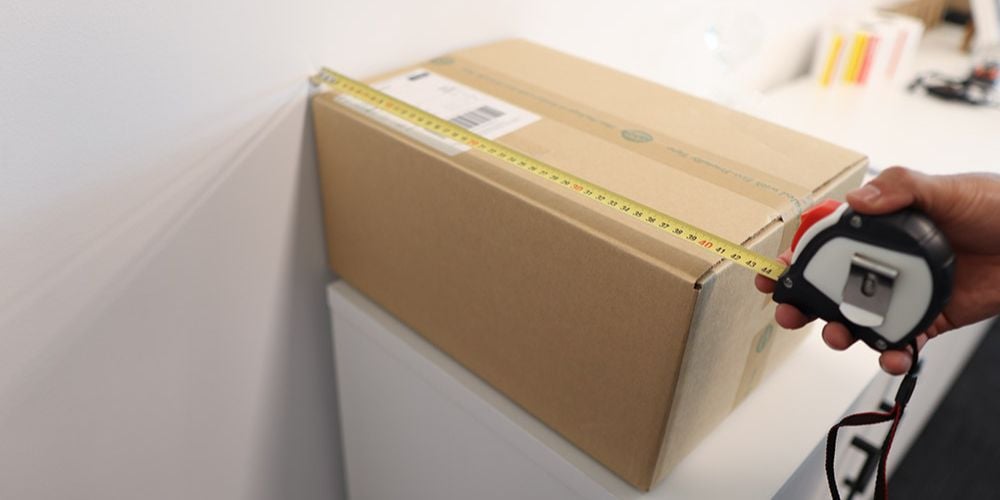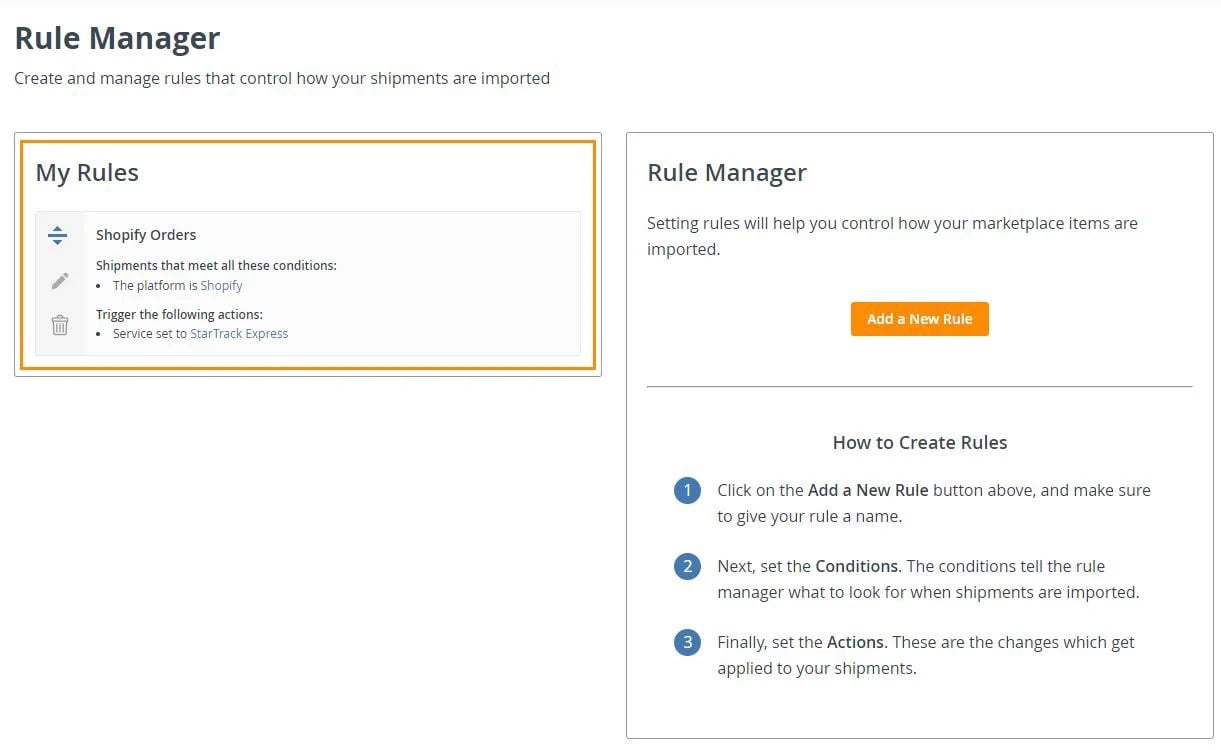Shipping mistakes are costly.
They eat into your margins. They upset your customers. They wreak havoc on your business.
The worst part is that you might not even know you’re making a common shipping mistake. You might think it’s an issue with the courier company or you’re dealing with a demanding customer.
That’s why we’ve compiled this comprehensive list of the most common shipping mistakes. Run your eyes through it and triple-check that you’re not making them. If you are, we’ve shared our expert tips on how to correct them.
Check them out!
1. Not Using Multiple Couriers
While you might share a special bond with your courier partner of choice, relying solely on one carrier can cost you in the long run.
You might think it will never happen to you, but what’s your backup plan if deliveries are delayed due to staffing issues or industrial action? More importantly, what will you tell your customers?
Plus, different couriers charge different rates. You might be overpaying your favorite carrier when you could save money by shopping around and utilising multiple companies.
No one has the time to visit every carrier's website to find the best deal. We recommend using a multicarrier shipping solution like Interparcel to browse the best prices for your parcel delivery needs in one location.

2. Slow Shipping Times
A study by Ipsos-Octopia found that delivery time is the most important factor for online shoppers. If you don’t know how long your customers are willing to wait for their items, you’re missing out on sales.
The best strategy is to provide a range of options at checkout. You can still include a standard offering. But you should also add express, next-day and same-day services.
Many customers will pay extra for fast deliveries if they need your products for an important deadline. Without the option of express services on your website, they’ll likely go somewhere else to one of your competitors.

3. No Shipping Offers
Running special offers on shipping throughout the year can reduce cart abandonment and increase sales. The trick is being tactical on when to promote them.
The best times of year to advertise these offers are when buyer intent is high. It can be during the peak sales periods like Black Friday and Cyber Monday. However, your products might also be popular during specific holidays like Valentine’s Day or Christmas.
Review your analytics to see when your store gets extra attention. To boost sales, use offers like free express shipping for orders over $50 or on high-margin items.
Another good strategy is to utilise free shipping as a last-ditch effort in your abandoned cart email sequence. If you haven't managed to salvage customers with 10% or 15% off discounts, this could be the incentive needed to get them over the edge.
4. Confusing Returns Policy
Returns might seem like a hassle, but they can benefit your business.
Statista found that seamless return services are an effective sales driver for ecommerce businesses. Displaying a transparent and straightforward returns policy can increase customer loyalty and encourage repeat purchases.
With over a quarter of customers returning an online purchase in the last 12 months, according to Australia Post, you should take a moment to review your policy and ensure it’s simple and easy for everyone to understand.
5. Lack of Stock Preparation
Have you ever underestimated your stock levels during busy sales periods?
It should never happen.
Review your sales data annually and forecast how many products you expect to move during that period. You can adjust it as you get closer to dates like Black Friday and Cyber Monday, but you must ensure you’re adequately prepared for an influx of sales.
A lack of preparation can result in lost sales. The last thing your customers will want to see is the words “out of stock” for the product they want to buy.
6. Not Checking Addresses
The customer is responsible for providing the correct address, right?
Wrong!
In the heat of the moment, when buying a new product, customers may mistype their address. It makes it challenging for courier drivers to deliver a parcel to a place that doesn’t exist. It also hurts your business.
Like it or not, you must validate addresses before a courier company picks up the parcel. When you use Interparcel’s Shipping Manager, our platform will confirm all addresses before you process the order. It will save you time Googling each one or waiting for a response from a customer who made a typo.
7. Inappropriate Parcels
Not all boxes are created equal.
Some are perfect for lighter products, and others are needed for multi-item orders.
You should always use a brand-new box for every shipment. While you might be tempted to reuse parcels from returns, it’s not recommended. They degrade over time, which can damage your items during delivery.
Some other packing tips we recommend are:
- Always use a double-corrugated box
- Never overfill your parcel
- Keep the package's edges flat to avoid tears or damage during delivery.
- Ensure your product is adequately protected with padding materials.
8. Not Available For Collection
One of the most important rules of parcel delivery is that you must be available for the driver to collect the package.
When you book your order, you’ll receive a notification advising when the courier company will pick it up. You must ensure you’re available, or your delivery will become more expensive.
You’ll not only get charged a futile fee surcharge, but you’ll also have to rebook another courier to come and collect your item. Plus, your customers won’t be happy waiting longer for their product to arrive.
9. No Parcel Tracking Solution
You need to watch your parcels like a hawk.
Tracking orders allows you to spot delays before your customers do. You can control the messaging and resolve any issues that arise.
Keeping tabs is easy when you ship with Interparcel. You can opt to receive email or SMS notifications at specific milestones. Alternatively, contact our customer support team, and they will provide status updates every 48 hours until the parcel has arrived at its intended destination.
10. Sending Prohibited Items
Did you know some items can’t be shipped?
We don’t just mean dangerous items or illegal substances. For example, some couriers won’t deliver Christmas crackers, magnets, or high-value products.
You might think your products are harmless, but it’s worth checking Interparcel’s prohibited and restricted items list first.
Review the list thoroughly to ensure it’s safe to ship your product. If you don’t, the transit warranty will be void, and it will be left to the discretion of the courier company as to whether they want to deliver it.
11. Wrong Measurements
All parcels are measured and weighed at fulfilment centres. They’re also cross-referenced against the dimensions you supply when booking an order.
If they’re wrong, you’ll need to pay surcharges to compensate for the size or weight you didn't disclose.
Follow these five steps to get it right every time:
- Only collect measurements once your parcel is ready for delivery.
- Place your box against a wall and get the length, width, and height.
- Round these figures up one or two centimetres.
- Multiply the length, width, and height by the dimensional weight divisor to get the volumetric weight.
- Round up to the nearest kilogram for safety.

12. Choosing the Wrong Shipping Service
There are price differences for parcels shipped to businesses and residential addresses.
But that doesn’t mean you should choose the cheapest option regardless of where it is going.
Choosing the wrong service will result in additional charges. It could even cost you more than what you would have paid for the correct one.
When browsing rates, pay close attention to the offerings available. Only choose a B2B service if you’re shipping to a business address. Just make sure the service you select accurately reflects the service you require.
13. Sticking With Manual Processes
You no longer have to perform every fulfilment task manually. In fact, we recommend that you don’t.
Manual processes increase the risk of human error. Whether it’s typing the incorrect address or choosing the wrong service to deliver the parcel, these mistakes can cost you dearly.
Platforms like Interparcel help speed up your fulfilment operations and reduce the risks of human errors by:
- Importing all your orders into one user-friendly dashboard.
- Creating automated rules for repetitive tasks like adding transit insurance on high-value products.
- Printing shipping labels directly from the platform.
- Tracking your orders from pick-up to delivery.

14. Label Errors
You must take extra care when attaching labels to your parcels.
One of the most common shipping mistakes is when people place the wrong label on a parcel. To avoid this, put a system in place to ensure you label them correctly. It might be stacking them in order of how you processed them or marking the boxes with an identifier.
Another common issue is not securing labels correctly. Ensure it is attached to the top or largest part of the box. Tape it down so it remains secure but avoid covering the barcodes as it can affect scanners.
Don’t take this task lightly. Additional charges for incorrect or missing labels can make shipping more expensive.
15. Missing or Wrong Documents
In addition to shipping labels, there are vital documents you must attach when shipping a parcel overseas.
The most crucial document is the commercial invoice. It must be clearly filled out and include these items:
- The country where the product is from.
- Your name and address, as well as the buyer's.
- A detailed description of the item, including what it is, what it's made of, and what it's used for.
- Quantities and weights.
- The purchase price of each item.
- A tariff code.
- A certification of origin.
- A copy of known Free Trade Agreements, if it's required.
Not providing these details will result in customs delays and could result in your parcel being refused entry at the border.
16. Freight Without Warranty
We highly recommend all parcels have warranty before they are collected.
Transit warranty protects the shipment against damage or loss. It’s never the intention of the courier company to break or lose your package. But, it can be out of their control due to circumstances such as weather events.
The good news is that when you ship with Interparcel, the first $100 is included with your order. If your item is more expensive, you can purchase additional coverage calculated at 2% of the product’s value up to a maximum of $2000.
17. Ignoring Country Regulations
Before you ship anything overseas, you must take the time to review the rules about what you can and can’t send to the destination country.
The best place to search is the customs department website for the country you’re shipping items to. It will include a detailed list of what is eligible and prohibited.
You can also review Interparcel’s prohibited and restricted items list. It will show you what courier companies can deliver to various locations. Review it carefully, and if you have any questions, ask our team of shipping solution experts.
Correct Your Shipping Mistakes
You never want to pay more for shipping than you have to. Correcting these mistakes can save money on fulfilment and avoid unexpected invoices arriving in your inbox.
Contact our customer support team if you need help implementing these tips. They can provide a personalised strategy and demonstrate how Interparcel can help grow your business.










 Facebook
Facebook Twitter
Twitter Instagram
Instagram Linked In
Linked In YouTube
YouTube